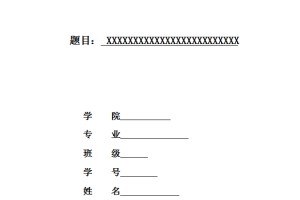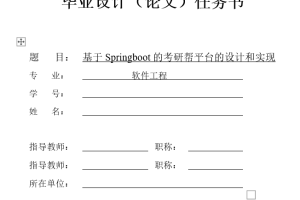生物质秸秆成型机多目标优化设计
摘要:生物质压缩成型燃料可广泛用于各种类型的家庭取暖炉(包括壁炉)、小型热水锅炉、热风炉,也可用于小型发电设施,是我国充分利用秸秆等生物质资源替代煤炭的重要途径,具有良好的发展前景。目前,国内外最常见的成型机技术主要包括三大类:螺旋挤压技术、活塞冲压技术和压滚式成型技术。根据主要工艺特征,成型工艺可分为湿压成型、热压成型和炭化成型三种基本类型。本课题是针对压滚式成型技术,将原有机电传动改为机电液传动,流量控制转速,简化了机械调速系统,并能实现低转速大转矩,提高了生产效率,消除成型机被物料堵住的卡机现象,实现了设备的自动保护的功能。
关键词:生物质;压缩成型;秸秆;多目标优化设计
Multi – objective Optimization Design of Biomass Straw Forming Machine
Abstract: Biomass compression molding fuels can be widely used in various types of home heating furnaces (including fireplaces), small hot water boilers, hot blast stoves and small power generation facilities. It is the best way to replace coal with biomass resources such as straw in China. An important way, with good prospects for development. At present, the most common molding machine technology at home and abroad mainly include three categories: screw extrusion technology, piston punching technology and pressure roll forming technology. According to the main process characteristics, molding process can be divided into wet pressing, hot pressing and carbonization forming three basic types. This subject is for the roll-forming technology, the original mechanical and electrical transmission to mechanical and electrical hydraulic transmission, flow control speed, simplifying the mechanical speed control system, and can achieve low-speed high torque, improve production efficiency, eliminating the machine was Material blocking card machine phenomenon, to achieve the automatic protection function of the device.
Key words: Biomass; Compression molding; Straw; Multiobjective optimization design
目 录
第1章 绪 论………………………………………………….. 1
1.1 引言…………………………………………………… 1
1.2 生物质能利用技术………………………………………… 2
1.3 国外生物质能开发利用概况…………………………………. 4
1.3.1 美国………………………………………………….. 4
1.3.2 巴西………………………………………………….. 4
1.3.3 欧洲………………………………………………….. 5
1.3.4 印度………………………………………………….. 5
1.4 我国生物质能开发利用现状…………………………………. 5
第2章 生物质秸秆成型机及生物质压缩成型燃料技术……………………. 8
2.1 生物质压缩成型燃料技术概念与原理………………………….. 8
2.1.1 生物质压缩成型燃料技术原理……………………………… 9
2.1.2 生物质压缩成型燃料技术工艺…………………………….. 9
2.2生物质秸秆成型机概述……………………………………… 10
2.2 发展历史………………………………………………. 11
2.3 固体生物质结构特点……………………………………… 12
2.4 生物质压缩成型原理……………………………………… 12
2.5 压缩成型工艺类型及阶段………………………………….. 13
2.6 生物质压缩成型工艺流程………………………………….. 17
第3章 成型机技术……………………………………………… 20
3.1 螺旋挤压成型机………………………………………….. 20
3.2 活塞压力式成型技术……………………………………… 24
3.3 压辊式成型机…………………………………………… 24
第4章 生物质秸秆成型机多目标优化设计……………………………. 26
4.1 成型机类别选择与组成……………………………………. 26
4.1.1 成型机类别选择………………………………………… 26
4.1.2 成型机的组成………………………………………….. 26
4.1.3 成型机结构……………………………………………. 27
4.2 液压传动系统的选择和设计………………………………… 27
4.2.1 液压传动系统的选择…………………………………….. 30
4.2.2 液压传动系统的设计…………………………………….. 31
4.3 液压系统参数计算及元件选定………………………………. 33
4.3.1 执行元件的选定………………………………………… 33
4.3.2 动力元件的选定………………………………………… 35
4.3.3 电机的选定……………………………………………. 37
4.3.4 油箱容量的确定………………………………………… 38
4.3.5 过滤器的选择………………………………………….. 38
4.3.6 油管和管接头的确定…………………………………….. 39
4.3.7 压力计的选择………………………………………….. 39
4.3.8 阀的选择……………………………………………… 39
4.3.9 液压工作介质的选定…………………………………….. 39
4.3.10 保护装置的选定……………………………………….. 39
4.3.11 离合器的选定…………………………………………. 40
4.4 液压系统主要性能验算……………………………………. 41
4.4.1 液压系统压力损失验算…………………………………… 41
4.4.2 液压系统效率的估算……………………………………. 42
4.4.3 发热温升估算………………………………………….. 42
参 考 文 献…………………………………………………. 44



